Mothra (film)
7 /10 1 Votes7
73% Rotten Tomatoes Genre Fantasy, Sci-Fi, Thriller Country Japan | 6.6/10 IMDb Director Ishiro Honda Duration Language JapaneseEnglish | |||||||||||||||||||||||||||||||||
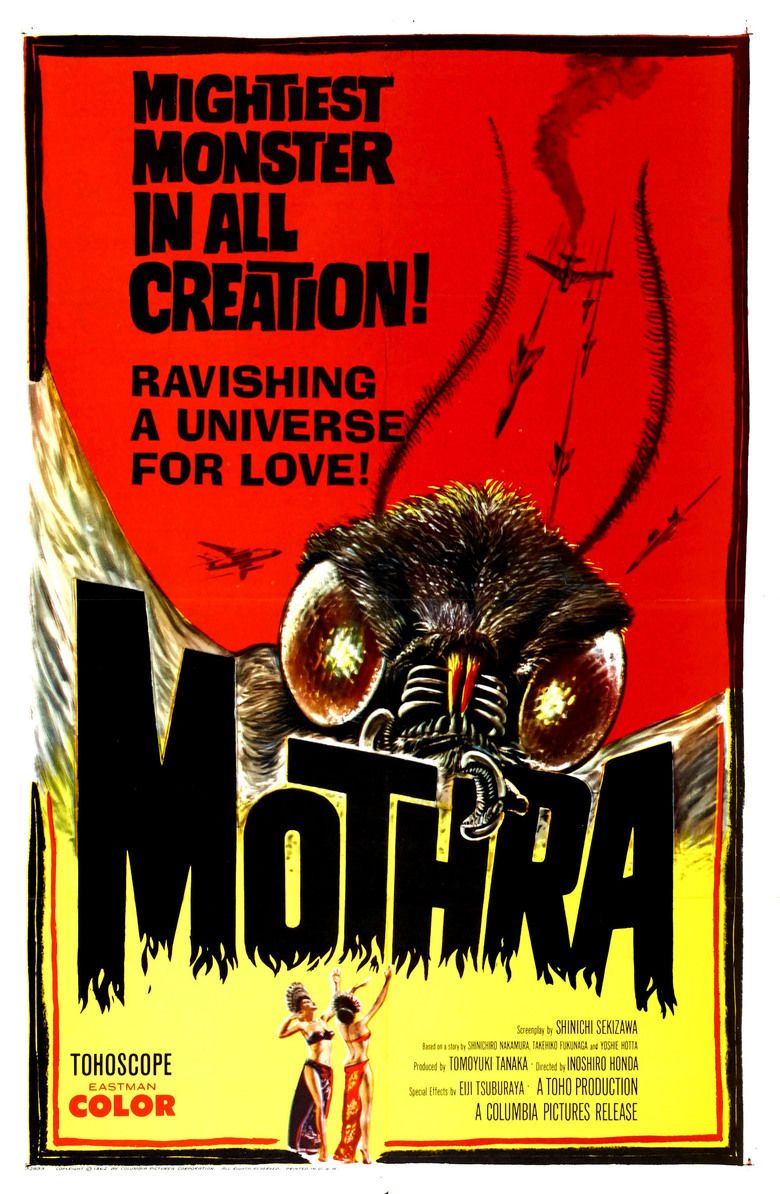 | ||||||||||||||||||||||||||||||||||
Release date July 30, 1961 (1961-07-30)May 10, 1962 (1962-05-10) Writer Shinichi Sekizawa (screenplay), Shinichiro Nakamura (novel), Takehiko Fukunaga (novel), Yoshie Hotta (novel) Story by Takehiko Fukunaga, Shinichiro Nakamura, Yoshie Hotta Cast (Journalist Senichiro 'Sen-chan' Fukuda), (Dr. Shin'ichi Chûjô), Kyôko Kagawa (Photgrapher Michi Hanamura), (Dr. Harada), Emi Ito (Shobijin (Twin Fairy)), Yûmi Ito (Shobijin (Twin Fairy))Similar movies Tagline Mightiest Monster In All Creation Ravishing a Universe for Love | ||||||||||||||||||||||||||||||||||
Mothra 1961 trailer
Mothra (モスラ, Mosura) is a 1961 science fiction kaiju tokusatsu film from Toho Studios, directed by genre regular Ishirō Honda with special effects by Eiji Tsuburaya. It is the genre film debut of screenwriter Shinichi Sekizawa, whose approach to Toho's monster and fantasy films grew to prominence during the 1960s. The film stars Frankie Sakai, a popular comedian in Japan at the time, and Hiroshi Koizumi, in the first of many academic roles he would adopt in tokusatsu. Jerry Ito (transliterated as "Jelly Ito" in the credits of the U.S. release) stars in the film, his only appearance in a Toho monster film. Ito did however appear in 1958's Japanese-American co-production The Manster, and in Toho's 1961 end-of-the-world feature The Last War.
Contents

Its basic plot was recycled in King Kong vs. Godzilla and Mothra vs. Godzilla (1962 and 1964, both also written by Sekizawa), and Mothra would become Toho's second most popular kaiju character after Godzilla, appearing in seven Godzilla sequels and her own trilogy in the 1990s.
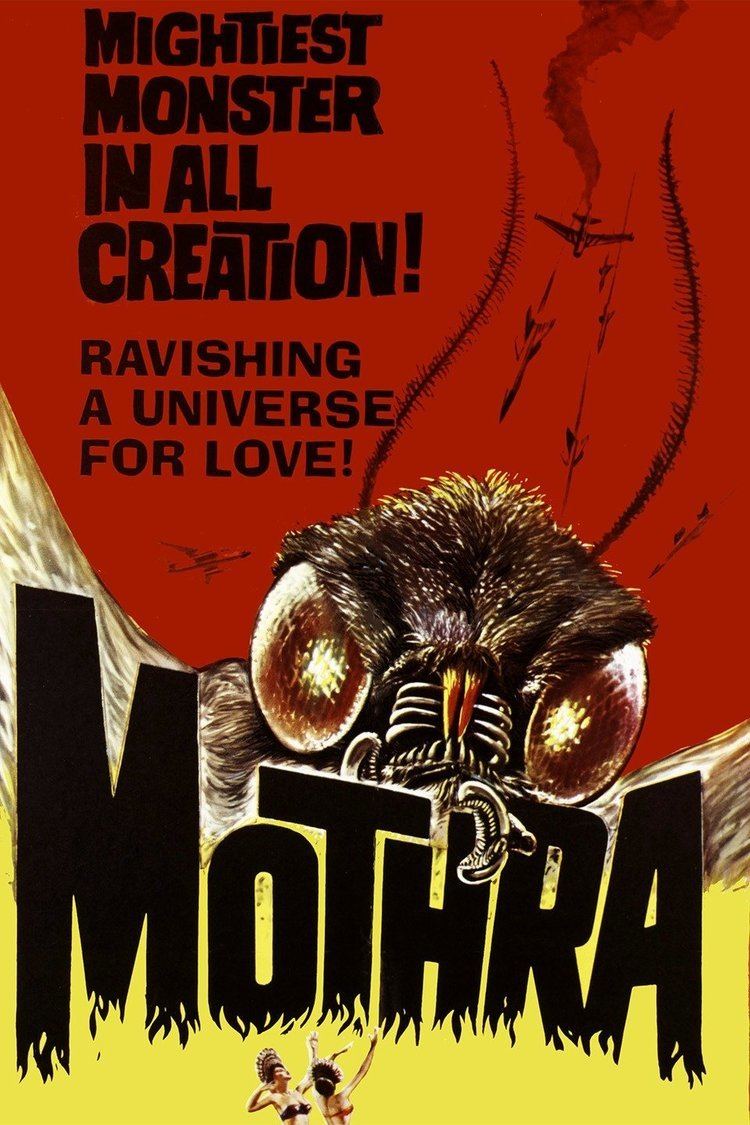
Mothra toho 1961 trailer
Plot
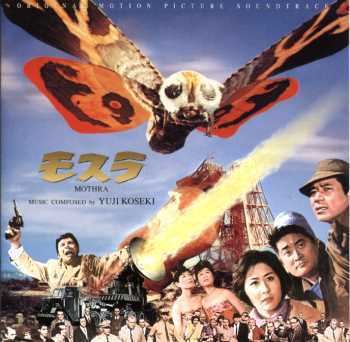
An expedition to an irradiated island brings civilization in contact with a primitive native culture. When one sensationalist entrepreneur tries to exploit the islanders, their ancient deity arises in retaliation.

In waters off Infant Island, a presumed uninhabited site for Rolisican atomic tests, the Daini-Gen'you-Maru is caught and run aground in the turbulence of a typhoon. A rescue party following the storm finds four sailors alive and strangely unafflicted with radiation sickness, which they attribute to the juice provided them by island natives. The story is broken by tenacious reporter Zenichiro (also known as "Bulldog" or "Zen-chan") Fukuda (Sakai) and photographer Michi Hanamura (Kagawa), who infiltrate the hospital examining the survivors.
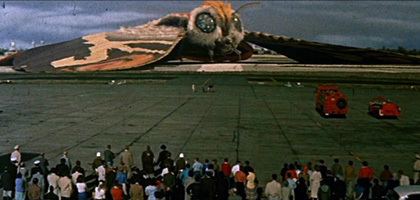
The Rolisican Embassy responds by co-sponsoring a joint Japanese–Rolisican scientific expediction to Infant Island, led by capitalist Clark Nelson (Ito). Also on the expedition are radiation specialist Dr. Harada (Ken Uehara), linguist/anthropologist Shin'ichi Chūjō (Koizumi), and stowaway reporter Fukuda. Chūjō has studied the cultures of islands in the area and ascertained that one of the key hieroglyphs in their written language, a radiant cross-shaped star, translates as Mothra. There the team discover a vast jungle of mutated flora, a fleeting native tribe, and two young women only twelve inches tall (Emi and Yumi Itō), who save Chujo from being eaten by a vampire plant. The "Shobijin" (small beauties), as Fukuda dubs them, wish their island to be spared further atomic testing. Acknowledging this message, the team returns and conceals these events from the public.
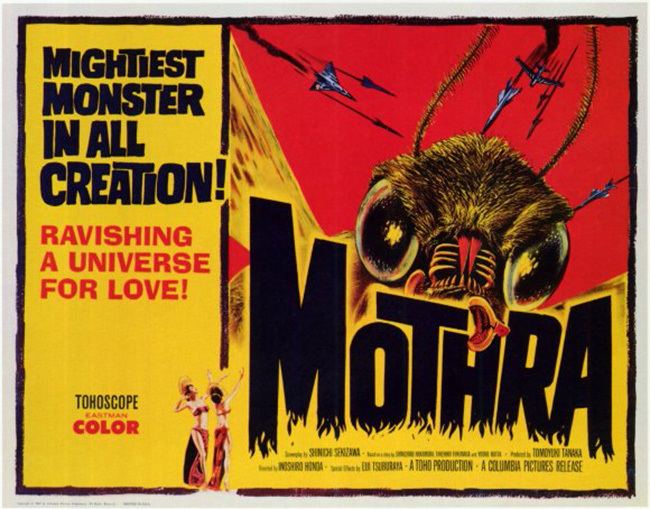
Nelson, however, returns to the island with a crew of henchmen and abducts the girls, gunning down several natives who try to save them. While Nelson profits off a "Secret Fairies Show" in Tokyo featuring the girls singing, both they and the island natives beseech their god Mothra, a giant egg, for help. Fukuda, Hanamura, and Chūjō communicate with the young women via telepathy; they express conviction that Mothra will come to their aid and warn that "good people are sure to be hurt". Meanwhile, Fukuda's newspaper has accused Nelson of holding the girls against their will; Nelson denies the charge and files a libel suit against the paper. Meanwhile, the island egg hatches to reveal a gigantic caterpillar, which begins swimming the Pacific Ocean toward Japan. The caterpillar destroys a cruise ship and survives a napalm attack on a beeline path for Tokyo. The Rolisican Embassy, however, defends Nelson's property rights over the girls, ignoring any connection to the monster.
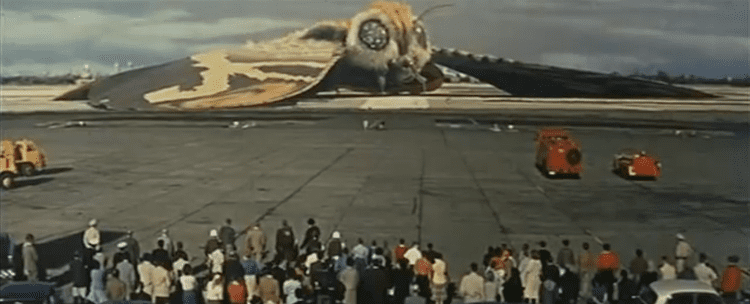
Mothra finally arrives on the Japanese mainland, impervious to the barrage of weaponry directed at it, ultimately building a cocoon in the ruins of Tokyo Tower. Public feeling turns against Nelson, and he is ordered to release the girls. He flees incognito to Rolisica, where Mothra, newly hatched in an imago form, immediately resumes her search. Police scour New Kirk City for Nelson as Mothra lays waste to the metropolis. Ultimately, Nelson is killed in a shootout with police, and the girls are assigned to Chūjō's care. Church bells begin to ring, and sunlight illuminates the cross atop the steeple with radiant beams, reminding Chūjō and Hanamura of Mothra's unique symbol and of the girls' voices. Chūjō hits upon a novel way to attract Mothra to an airport runway. The girls are returned amid salutations of "sayōnara", and Mothra flies back to Infant Island.
Cast
Production
Based on the novel The Luminous Fairies and Mothra, this adaptation was penned by Shinichi Sekizawa, who submitted his first draft proposal in 1960. Vaguely titled The Giant Monster Thing, this early concept featured a race of tiny women alongside the movie's giant monster. A name for the fairies was not specified in this first proposal, as apparently even at this early stage Sekizawa was contemplating a name change from their original title of the "Airenas" from the book.
In an unusual turn of events, another draft proposal was submitted shortly after. Re-titled Giant Monster Mothra, this second proposal fleshed out the concept more, giving the small women the name of the "Pichi Fairies" while citing that five would be seen during the course of the film. The size of the Pichi Fairies was stated as being 60 centimeters, showing a strange level of detail in this respect for a draft proposal. For reference, that would have been roughly twice the size of the final "Shobijin." The idea was seen as a winner, as a more fleshed out screenplay was finally commissioned.
In 1960, the first script for the production was completed, and was accompanied by a storyboard to help relate the concept. The storyboard, infamous for showing a rather frightening interpretation of Mothra, displayed a number of different concepts compared to the final film, including Mothra squaring off with a squadron of jets and also building a cocoon on the Diet Building, a concept that would eventually return in Godzilla vs. Mothra (1992). A lot of this was about to change, though, with the signing of two popular singers to the project.
On January 14, 1961, the second draft of Giant Monster Mothra was submitted. Since the first draft, the singing duet The Peanuts (Emi and Yumi Ito) had been attached to the production. Seeing a very lucrative idea in the making, the fairy role was altered to just that of the singing duo, while their name was also changed to the Shobijin. The concept would be altered even further by Sekizawa, as a third draft of the script was submitted on February 5 of that same year. Production on the movie was now in full swing, although the name Giant Monster Mothra hanged around for quite a while, even being used on advance posters before it was shortened to simply Mothra (1961) for its final release.
When explaining the origins of the film, Ishiro Honda stated, "For Mothra, producer [Tomoyuki] Tanaka set up a plan to create a completely different monster movie from what we had previously produced. We asked three young novelists to create the original story, and Shinichi Sekizawa was responsible for the screenplay. During the screenplay development, Mr. Sekizawa coined the term Shobijin (little beauties) for the twin fairies". Honda also stated that it was King Kong that had a huge influence on the story. When asked if Mothra was a Japanese version of King Kong, Honda replied: "From the early planning stages with Mr. Tsuburaya, before the screenplay was written, the setting was an adventure set on a South Sea island, where a mysterious giant creature is worshiped as a God. There's also a showman and beauty (in this case little beauties), causes a city to be rampaged. So yes, this is a Japanese version of King Kong. However I wanted our final act a happy ending, and not like the denouement of Kong, which ended in tragedy."
The original climax for Mothra was entirely different from what ended up in the final print. Originally, Nelson and his group had planned to kidnap Shinji Chujo for a longer period of time, rather than leaving him tied up as they fled the country. Instead, they took the small boy on a private plane as they attempted to flee, only to accidentally crash near a mountainside. Meanwhile, the film's heroes are in close pursuit, having brought along the authorities to help save the boy. All of this takes place while Mothra is still in its cocoon, meaning that Fukuda and the others weren't originally planned to witness the birth of Mothra's adult form. Instead they give chase to Nelson as Mothra breaks free after the Atomic Heat Ray Gun attack. She then immediately flies to the mountainside, kills Nelson and goes back to Infant Island with the Shobijin.
It's hard to say how much of the original climax was finished before being cut, but there are a number of black and white production stills showing that the mountain chase sequence was filmed, at least in part; however, no photos have been seen of the story boarded sequence relating to the plane crash that would have occurred just before it. Honda explained this scenario, "In the finished film the villain, played by Jerry Ito, flees to New Kirk City. However in relation to shoot schedule and budget, we revised the ending to the villain being cornered in the mountains of Kyushu, which I rewrote with Mr. Sekizawa. Since there was a contract with a U.S studio (Columbia Pictures), Toho deliberated while awaiting approval for this change from the American side. Toho decided to not wait, and ordered me to start shooting this alternate ending on location (in Kagoshima). So I left for the shoot with the cast and crew before the reply came in. In fact these scenes were part of principal photography. However when we returned to the studio after getting everything safely in the can, Toho received a "No" answer from the U.S side. So we had to re shoot the ending after all. Unfortunately the budget was stretched when creating the New Kirk City sets. And if that wasn't enough, another problem arose. While we were shooting in Kyushu, there was a scene where the villain is blown off by Mothra's wings, and falls to his death deep into a volcanic crater. We used a life-sized dummy for that shot, but the second unit crew didn't bother recovering it. After a few days, it was spotted by a group of climbers, who took it as a suicide and contacted the local authorities. Causing quite the uproar, the police immediately formed a rescue party, and scaled down the treacherous precipice only to discover it was just a dummy. Needless to say we were soundly scolded. Despite the hardship in shooting the footage, none of the film was ever developed."
Release
Mothra was released in Japan on July 30, 1961 where it was distributed by Toho.
Mothra was released by Columbia Pictures with an English dub on May 10, 1962. This version had an 90 minute running time.
The film has been re-released theatrically in Japan since its release. This includes a shorter version of the film distributed by Toho with a 62 minute running time on December 14, 1974. This version was edited by Ishiro Honda. Mothra was re-released theatrically in Japan on November 21, 1982 as part of Toho's 50th anniversary.
Reception
Film critic A. H. Weiler in The New York Times gave the film a generally positive review, singling out the color and special effects for praise. "There's that color, as pretty as can be, that now and then smites the eye with some genuinely artistic panoramas and décor designs."
DVD release
Columbia TriStar (Sony)
Mill Creek Entertainment
References
Mothra (film) WikipediaMothra (film) IMDbMothra (film) Rotten TomatoesMothra (film) themoviedb.org
